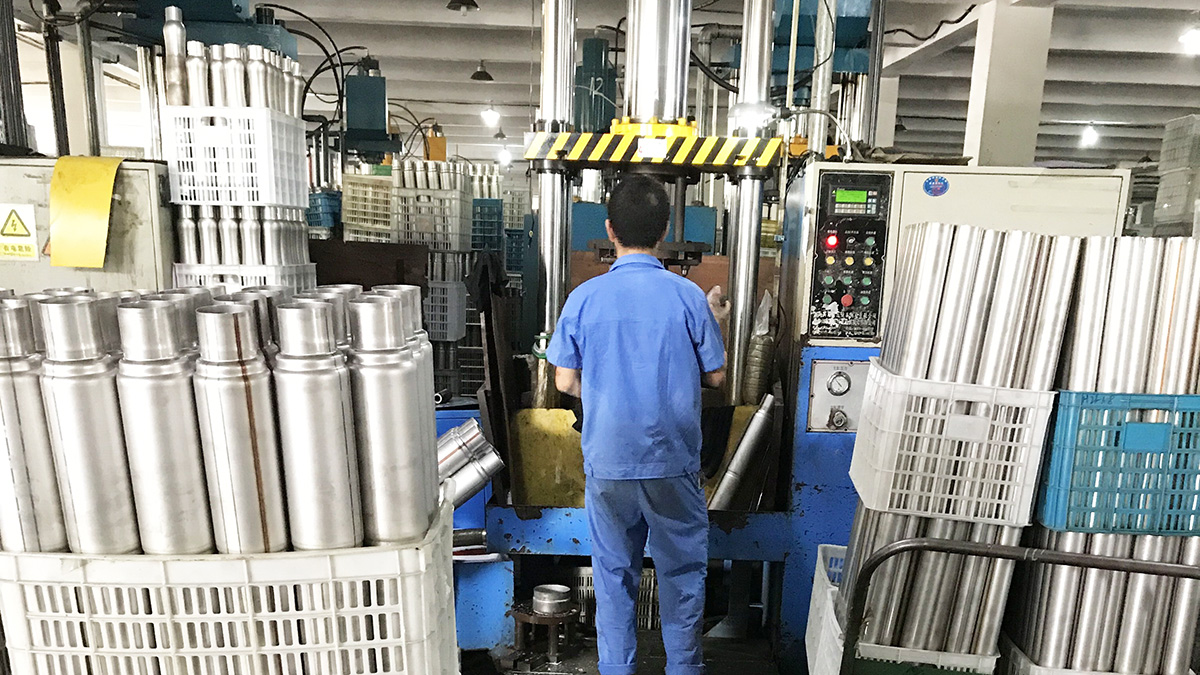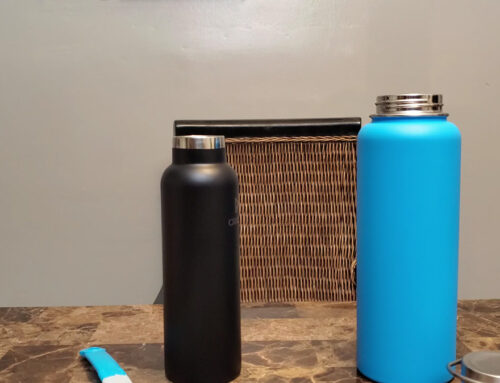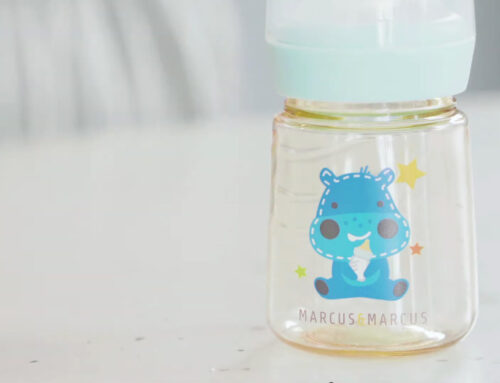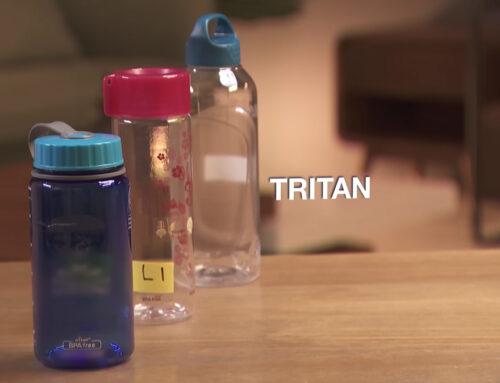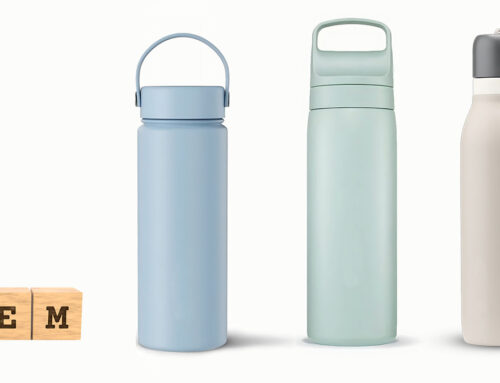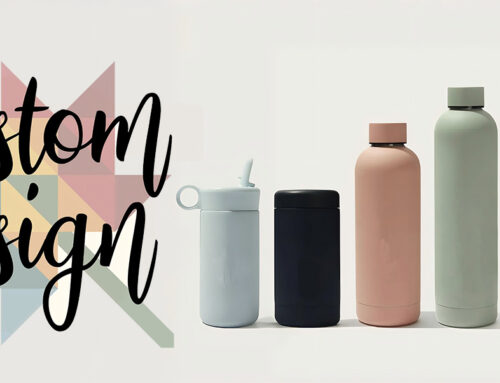Customers often ask KingStar Engineering team three questions about the materials of 304 stainless steel (18/8 stainless steel). The first one is why 304 stainless steel is called 18/8 stainless steel; The second one is what are the advantages of 18/8 stainless steel water bottles; The third one is why 18/8 stainless steel is the best material for making vacuum flasks. From this article, you can get all answers.
304 stainless steel is a common one in the category of stainless steel, with a density of 7.93 g/cm³ and High temperature resistant to 800℃, that is why it is called 18/8 stainless steel in the industry. With good processing performance and great resilience, it is widely used in factories, furniture decoration industry and food and medical industry.
304 is a widely-applicated stainless steel, which is used to make equipment and parts that require good overall performance (like corrosion resistance and moldability). In order to maintain the corrosion resistance of stainless steel, more than 18% chromium and more than 8% nickel are needed in steel. 304 stainless steel is a model produced in accordance with the American ASTM standard.
Explainer Video: Material Guide for Water Bottle Tumbler Cup
Physical Properties
Tensile strength σb (MPa)≥515-1035
Offset yield strength σ0.2 (MPa)≥205
Elongation δ5 (%)≥40
Reduction of area ψ (%)≥?
Hardness: ≤201HBW; ≤92HRB; ≤210HV
Density (20℃,g/cm³): 7.93
Melting point (℃): 1398~1454
Specific heat capacity (0~100℃,KJ·kg-1K-1): 0.50
Thermal conductivity(W·m-1·K-1): (100℃)16.3, (500℃) 21.5
Linear expansion coefficient (10-6·K-1) : (0~100℃)17.2, (0~500℃)18.4
Resistivity (20℃,10-6Ω·m2/m): 0.73
Longitudinal modulus (20℃,KN/mm2): 193
Linear expansion coefficient (10-6·K-1) : (0~100℃) 17.2, (0~500℃) 18.4
Resistivity (20℃,10-6Ω·m2/m) : 0.73
Longitudinal modulus (20℃,KN/mm2) : 193
Product Standard
For 304 stainless steel, the Ni element in it is very important, which directly determines the corrosion resistance and value of 304 stainless steel.
The most important elements in 304 are Ni and Cr, but other elements are also very important, whether the elements important or not is determined by the specific requirements of product standard. Only the steel that contains more than 18% chromium and more than 8% nickel can be considered as 304 stainless steel. This is why the industry call this type of stainless steel 18/8. In fact, there are very clear regulations the relevant product standards about 304, and there are different product standards for different forms of stainless steel. Here are some common product standards and tests.
The true 304 stainless steel must meet the requirements of each element in the product standard. And it cannot be called 304 stainless steel as long as it fails to meet one of the requirements,
| 304 | C | Mn | P | S | Si | Cr | Ni |
| Requirement, % | ≤0.08 | ≤2.00 | ≤0.045 | ≤0.030 | ≤1.00 | 18.0–20.0 | 8.0-11.0 |
2、ASTM A240(Chromium and Chromium-Nickel Stainless Steel Plate, Sheet, and Strip for Pressure vessels and for General Applications)
| 304 | C | Mn | P | S | Si | Cr | Ni | N |
| Requirement, % | ≤0.07 | ≤2.00 | ≤0.045 | ≤0.030 | ≤0.75 | 17.5–19.5 | 8.0–10.5 | ≤0.10 |
3、JIS G4305(cold-rolled stainless steel plate, sheet and strip)
| SUS 304 | C | Mn | P | S | Si | Cr | Ni |
| Requirement, % | ≤0.08 | ≤2.00 | ≤0.045 | ≤0.030 | ≤1.00 | 18.0–20.0 | 8.0-10.5 |
4、JIS G4303 (Stainless steel bars)
| SUS 304 | C | Mn | P | S | Si | Cr | Ni |
| Requirement, % | ≤0.08 | ≤2.00 | ≤0.045 | ≤0.030 | ≤1.00 | 18.0–20.0 | 8.0-10.5 |
The four standards above are very common, in fact, there are other standards for 304 in ASTM and JIS. Each standard actually has different requirements for 304, so to determine whether a material is 304, you should know whether it meets the requirements of a certain product standard. The material certificate generally requires the following types of reports:
The specific comparison between different standards: as of 2015-12-08
| No. | Standard / S30400 | C | Mn | P | S | Si | Cr | Ni | N | Cu |
| 1 | ASTM A276/A276M-15 | 0.08 | 2.00 | 0.045 | 0.030 | 1.00 | 18.0-20.0 | 8.0-11.0 | ||
| 2 | ASTM A959-11 | 0.07 | 2.00 | 0.045 | 0.030 | 1.00 | 17.5-19.5 | 8.0-11.0 | ||
| 3 | ASTM A240/A240M-15a | 0.07 | 2.00 | 0.045 | 0.030 | 0.75 | 17.5-19.5 | 8.0-10.5 | ||
| 4 | ASTM A182/A182M-15 | 0.08 | 2.00 | 0.045 | 0.030 | 1.00 | 18.0-20.0 | 8.0-11.0 | 0.10 | |
| 5 | ASTM A193/A193M-15 | 0.08 | 2.00 | 0.045 | 0.030 | 1.00 | 18.0-20.0 | 8.0-11.0 | ||
| 6 | ASTM A269/A269M-15 | 0.08 | 2.00 | 0.045 | 0.030 | 1.00 | 18.0-20.0 | 8.0-11.0 | ||
| 7 | ASTM A312/A312M-15a | 0.08 | 2.00 | 0.045 | 0.030 | 1.00 | 18.0-20.0 | 8.0-11.0 | ||
| 8 | ASTM A320/A320M-15a | 0.08 | 2.00 | 0.045 | 0.030 | 1.00 | 18.0-20.0 | 8.0-11.0 | ||
| 9 | ASTM A403/A403M-15 | 0.08 | 2.00 | 0.045 | 0.030 | 1.00 | 18.0-20.0 | 8.0-11.0 | ||
| 10 | ASTM A493-09(2013) | 0.08 | 2.00 | 0.045 | 0.030 | 1.00 | 18.0-20.0 | 8.0-10.5 | 0.10 | 1.00 |
| 11 | ASTM A554-15a (MT-304) | 0.08 | 2.00 | 0.045 | 0.030 | 1.00 | 18.0-20.0 | 8.0-11.0 | ||
| 12 | JIS G4303:2012 | 0.08 | 2.00 | 0.045 | 0.030 | 1.00 | 18.0-20.0 | 8.0-10.5 | ||
| 13 | JIS G4304:2012 | 0.08 | 2.00 | 0.045 | 0.030 | 1.00 | 18.0-20.0 | 8.0-10.5 | ||
| 14 | JIS G4305:2012 | 0.08 | 2.00 | 0.045 | 0.030 | 1.00 | 18.0-20.0 | 8.0-10.5 | ||
| 15 | GB/T 20878-2007 | 0.08 | 2.00 | 0.045 | 0.030 | 1.00 | 18.0-20.0 | 8.0-11.0 |
Application
Overview: 18/8 stainless steel has good corrosion resistance, low temperature strength, heat resistance and mechanical properties; it has good hot workability such as stamping and bending, without heat treatment hardening (-196℃~800℃). It is resistant to atmospheric corrosion. But in industrial atmosphere or heavily polluted areas, it needs to be cleaned in time to avoid corrosion. 304 stainless steel is suitable for food processing, storage and transportation, and has good processing properties and weldability. It can be used for plate heat exchangers, bellows, household items (tableware, water bottles, metal glass, cabinets, indoor pipes, water heaters, boilers, bathtubs, pet bowls, recycled soap dispensers, etc.), auto parts (scrapers, etc.).) Water heaters), mufflers, molded products), medical equipment, building materials, chemicals, food industry, agriculture, ship parts, etc. 304 stainless steel is a nationally recognized food grade stainless steel.
Most of the requirements for 304 stainless steel are to maintain the original appearance of the building for a long time. The type of the stainless steel applicated are mainly determined by aesthetic standards, the corrosiveness of the local atmosphere and the cleaning system to be adopted. However, other requirements include the integrity or impermeability of building structure, like the roofs and side walls of industrial buildings. In the applications of it, owner’s construction cost may be more important than the aesthetics, so they can endure the unsightly appearance. The 304 stainless steel is best suitable in a dry room. However, you need to wash it frequently if you want to maintain its beautiful appearance outdoors in the countryside and cities. In industrial areas with heavy pollution and coastal areas, the surface of it will be very dirty and even rusty.
However, to obtain the pleasant appearance outdoors, the nickel-containing stainless steel is required. Therefore, 304 stainless steel is widely used in curtain walls, side walls, roofs and other constructions. However, 316 stainless steel is highly recommended in industries with severe corrosion or marine atmospheres. People have fully realized the advantages of stainless steel in structural applications. There are several design criteria that include 304 and 316 stainless steel. Because the “duplex” stainless steel 2205 has combined good atmospheric corrosion resistance with high tensile strength and elastic limit strength, this steel is also included in the European standards. In fact, stainless steel is manufactured in full-standard metal shapes and sizes, including many special shapes.
Products Standard
International stainless steel marking method
The American Iron and Steel Institute uses three digits to indicate various standard grades of forgeable stainless steel:
- Ferritic and martensitic stainless steels are represented by numbers in the 400 series.
- Ferritic stainless steel is marked with 430 and 446, and martensitic stainless steel is marked with 410, 420 and 440C.
- Duplex (austenite-ferrite), stainless steel, precipitation hardening stainless steel and high alloys with less than 50% iron content are usually named by patent names or trademarks.
The classification standards
4-1 Classification: ①National Standard GB ②Industry Standard YB ③Local Standard ④Enterprise Standard Q/CB
4-2 Classification: ①Product standard ②Packaging standard ③Method standard ④Basic standard
4-3 Standard level (including three levels): Y level: international advanced level I: international general level H level: domestic advanced level
4-4 National Standard
GB1220-2007 Stainless Steel Bar (Grade I) GB4241-84 Stainless Steel Welded Disc (Grade H)
GB4356-2002 Stainless Steel Welded Panel (Grade I) GB1270-80 Stainless Steel Pipe (Grade I)
GB12771-2000 stainless steel welded pipe (Y grade) GB3280-2007 stainless steel cold plate (I grade)
GB4237-2007 stainless steel hot plate (level I) GB4239-91 stainless steel cold strip (level I)
Processing Method
Etching
The etching process is to screen-print an acid-resistant protective film on the surface of stainless steel, and then etch with ferrous chloride solution to create artistic patterns.
Spray color
The color spray method is to spray pigment particles after screen printing to form a pear-like surface and create an artistic pattern.
Crafting process
The process of the color spray art of stainless steel products is: stainless steel products → silk screen → etching → alkali treatment → silk screen → oxidation coloring → alkali treatment → finished product.
The process of the etching art of stainless steel products is: stainless steel products → silk screen → etching → alkali treatment → oxidation coloring → finished product.
The chemical coloring method of stainless steel does not use pigments and dyes, but immerses the stainless steel in a heated concentrated chromium sulfate solution for chemical coloring, which is characterized by good food resistance. The ink used in this processing method must have very strong acid resistance, and generally use UV vulcanized ink with special properties that is compatible with the treatment process.
Stamping
The most primitive processing method in factories is stamping. Stamping includes straight punching and stretching. Generally, the hardness lower than 1/2 is used for stretching and bending, and the hardness higher than 1/2 is used for straight punching.
Cause of Rust
The reasons lead to the rust of 304 stainless may as follows:
Chloride
Chloride ions are widespread in almost everywhere, such as salt/sweat traces/sea water/sea breeze/soil and so on. Stainless steel corrodes quickly in the presence of chloride ions, even exceeding that of ordinary low-carbon steel. Therefore, it is necessary to keep it clean and dry.
Solution treatment
The alloy elements are not dissolved into the matrix, resulting in low alloy content of the matrix structure and poor corrosion resistance.
Intergranular corrosion
This material without titanium and niobium has a tendency to intergranular corrosion. Adding titanium and niobium, together with stabilization treatment, intergranular corrosion can be reduced. A high-alloy steel that can resist corrosion in the air or in chemical corrosive media. Stainless steel is beautiful and has good corrosion resistance. It does not need surface treatments like plating. High-alloy steels such as 13 chrome steel and 18-8 chrome-nickel steel are the representative high-quality steel. From the perspective of a metallography, a very thin chromium film is formed on the surface thanks to the chromium in stainless steel. This film isolates the intrusion of oxygen from the steel and acts as a corrosion resistance. In order to maintain the inherent corrosion resistance of stainless steel, steel must contain more than 12% chromium, which is used in occasions where welding is required. The lower carbon content minimizes the precipitation of carbides in the heat-affected zone near the weld, and the precipitation of carbides may cause intergranular corrosion (welding erosion) of stainless steel in certain environments.
Surface mark phenomenon
The phenomenon of surface marks refers to the occurrence of wire-mounted or dotted dent marks on the surface of the 304 stainless steel after deep processing or grinding of processed products.
Reason: There are foreign bodies on the surface and the surface of the mold, and there are scars on the surface of the edge holder.
Countermeasures: Remove foreign bodies and scars before processing, and you can also remove orange peel by complete grinding.
Orange peel phenomenon refers to the phenomenon that the surface of 304 stainless steel molded products shaped like orange peel under grinding or other conditions.
Reason: Insufficient grinding, the longer the processing, the more the orange peels, the coarser grains of the raw materials, and the softening of heat treatment.
Countermeasures: Fully grind deep-processed products, select suitable heat treatment conditions, and control the grain size of raw materials.
As the world’s leading vacuum flask manufacturer, KingStar pays more attention to the health and sustainability of materials than buyers and consumers. If you have any questions about the stainless steel, please feel free to contact us any time.

